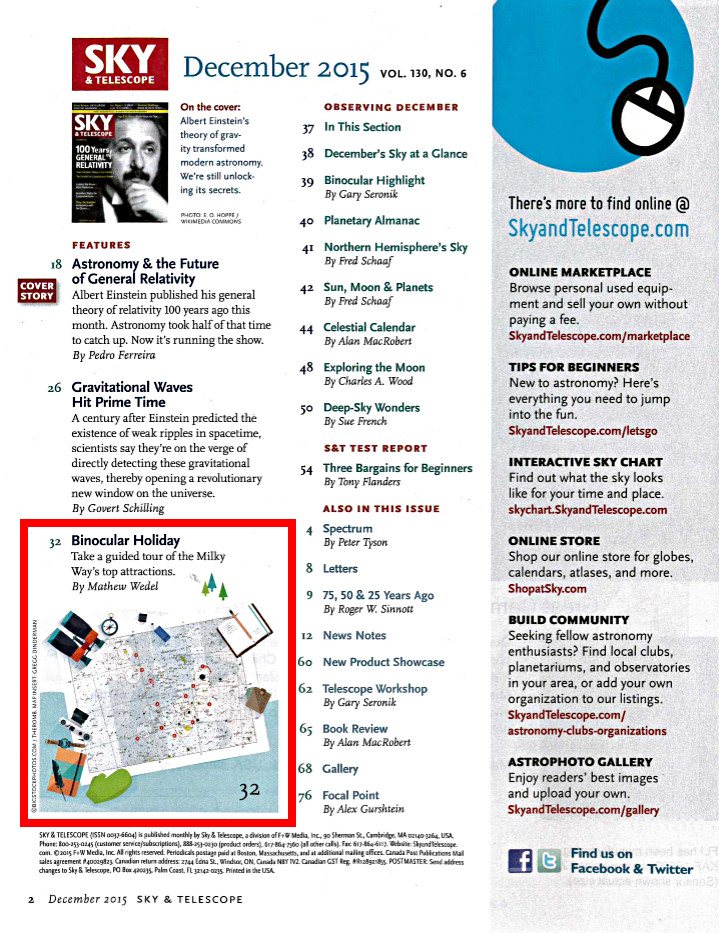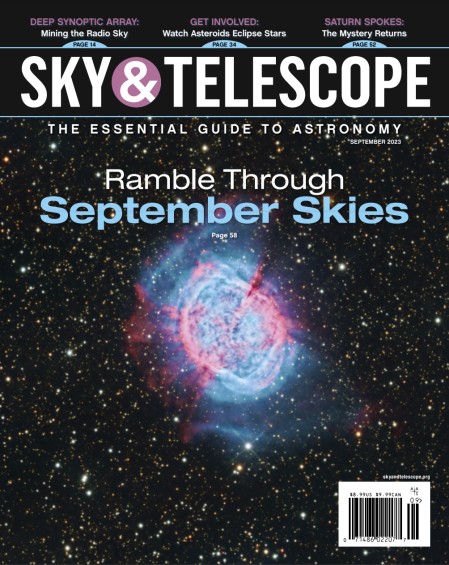
Einstein has my article on his mind!
Here’s the exciting news I teased back in September: the December 2015 issue of Sky & Telescope, which is available online and should be hitting newsstands about now, has an observing article by yours truly. It’s a binocular tour of the southern stretch of the winter Milky Way, from Canis Major through Puppis to end in Hydra.

The road that led here started back in December, 2014, when I got a very nice email from S. Johnson-Roehr, “JR”, the observing editor for Sky & Tel. JR had stumbled across this very site (possibly because I’d just recommended the newly-reprinted Caldwell Objects?) and asked if I’d be interested in contributing an observing article. We batted some ideas back and forth and quickly settled on the winter Milky Way. I had been through this area of the sky before but I wanted to give it one more pass, both to flesh out my notes and to road-test the star hops I had in mind. I made those observations this spring, wrote the article over the summer, and now it’s out in the world.
I have one favor to beg of anyone who reads the article – I need feedback. This is my first time writing about astronomy anywhere but a blog, forum post, or club newsletter, and I’d like to know (1) what worked, (2) what didn’t, and (3) what you’d like to see in the future. The comment field is open.
There’s a lot more to like in this issue of S&T, some of which will be of particular interest to regular readers of this blog. Tony Flanders has another inexpensive telescope shoot-out. Back in 2011 he and Joshua Roth looked at $100 scopes, in particular the Orion SpaceProbe 3, GoScope 80, and SkyScanner 100 (that article is a free download here, and a follow-up comparing the SkyScanner to the StarBlast is here). This time Tony considers three scopes in the $200 range: the Meade Infinity 90mm refractor and alt-az mount, the Orion StarBlast 4.5, and the Astronomers Without Borders OneSky. I won’t give away any spoilers, except to note that he finds all three to be capable scopes, which I’m sure is no surprise around here.
Another nice review in this issue is Alan MacRobert’s look at the first two volumes of Jeff Kanipe’s and Dennis Webb’s Annals of the Deep Sky, from Willmann Bell. As a deep-sky junkie who likes to read himself to sleep with Burnham’s Celestial Handbook and Stephen James O’Meara, I have been curious about these new books, but I hadn’t heard anything about their quality before reading MacRobert’s article. Sounds like I need to make space on my Christmas list.
There’s loads more interesting stuff in this issue – cover articles on Einstein and gravitational waves, great observing articles by Alan MacRobert, Fred Schaaf, Gary Seronik, and Charles A. Wood, a very nice piece by Sue French looking at some neglected open clusters and double stars in Cassiopeia (an area I thought I knew well)…you get the picture. If you’re not a subscriber, you can find the December issue of Sky & Telescope on your local newsstand, or order a print or digital copy online here.
If you’re new here, welcome! Have a look around, and feel free to comment.










